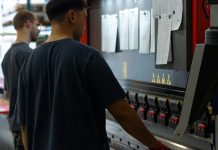 By Juergen Reers, Marcello Tamietti, Philipp Kupferschmidt, Stefan Hattula, and Sheryl Yaping Yu
By Juergen Reers, Marcello Tamietti, Philipp Kupferschmidt, Stefan Hattula, and Sheryl Yaping Yu
European automakers face growing competition from Chinese and U.S. electric vehicle (EV) manufacturers. While they still dominate their home market, their real challenge lies in markets beyond Europe. To stay ahead, European OEMs must capitalize on their heritage brands, get their EV manufacturing basics right by refining supply chains, batteries, and vehicle manufacturing, and adopt a customer-centric, software-first approach to future mobility.
The global automotive industry is undergoing a seismic shift. Traditional automakers, especially in Europe, are facing mounting pressure as electric vehicles (EVs) upend the status quo. Recent tariffs on Chinese EVs might offer European automakers temporary relief, but these barriers won’t hold forever. The reality is that Chinese original equipment manufacturers (OEMs) are playing the long game, with at least four planning to establish production capacity in Europe by 2027.
While the competition is real, European automakers must recognize that Chinese OEMs represent just one of many competitive forces, and the time to sharpen their long-term competitive edge is now. In this article, we suggest how European OEMs should think about their past, present, and future to build a unique value proposition from their strengths.
Domestic disruption, global gaps
European automakers still dominate their domestic market, maintaining over 60 per cent market share—nearly double that of US OEMs (33 per cent) in their home market[i]. However, complacency is not an option. European OEMs are at risk of disruption from US entrants like Tesla, established Chinese OEMs like BYD, and emerging Chinese EV start-ups like Li Auto, forcing them to compete on new battery and software skills.
Although there has been a recent slowdown in EV sales in the European market, electrification remains the future of the industry, with fundamental advantages such as higher energy efficiency, upcoming regulations, and technology investments having reached a tipping point. Yet EVs are precisely where new competitors are ahead of European OEMs on key customer criteria, including, but not limited to, price.
While European OEMs face growing competition at home, their real challenge lies in markets beyond Europe. In China, for instance, German automakers’ share of the passenger vehicle market shrank to 19 per cent in the first half of 2024, a significant drop from 25 per cent in 2020[ii]. The EV segment tells an even starker story: German OEMs collectively hold a meager 4 per cent of the market, while Tesla alone commands 7 per cent. Meanwhile, Chinese OEMs dominate, with 87 per cent of the local EV market[iii].
China is not just another battleground; it’s critical for mass EV adoption, with penetration rates surpassing 50 per cent for the first time in July 2024[iv]. Furthermore, in emerging markets, where 24 per cent of new cars were sold in 2023[v], Chinese OEMs are rapidly gaining ground. By 2030, their global market share could double to 33 per cent, up from 17 per cent in 2023[vi]. North America presents another uphill struggle, with European automakers’ market share declining from 21 per cent in 2020 to 18 per cent in 2023[vii], accelerated by the US Inflation Reduction Act and strong local competition.
While these challenges are daunting, they also present significant opportunities. It is not too late for European automakers to rethink their approach and secure a sustainable competitive advantage, drawing on their past, capitalizing on the present, and preparing for the future.
Learning from the past: Leveraging heritage brands
One of the greatest strengths of European automakers is their heritage. European OEMs have a well-established reputation for brand strength and reliability, not just within Europe, but globally. New competitors may be driving down prices, but heritage brands can adopt a differentiation strategy instead of a race to the bottom.
These heritage brands are known for their engineering, manufacturing excellence, design, and long-term quality, features that resonate with customers and are difficult for newcomers to replicate. For instance, consider how BMW has recently overtaken Tesla in Europe[viii], highlighting that traditional brands can outperform even the most disruptive newcomers. By focusing on their legacy and unique value propositions, European OEMs can both defend their market positions and expand into emerging markets.
Winning in the present: Master the fundamentals and stand out in services
Despite some doubts around EV adoption, the EV penetration rate in Europe has reached 20 per cent, while global penetration stands at around 18 per cent[ix]. This marks a critical transition point, where EVs are no longer a niche product but have entered the mainstream market. Our research found that more than 80 per cent of drivers in the EV mainstream market name reliability, safety, and price as the most relevant purchase criteria for buying an EV, whereas early adopters showed comparatively higher preferences for the latest technology and performance[x].
To cater to this broader market, European OEMs need to get the basics right. This includes refining supply chains, batteries, and vehicle manufacturing to bring costs in line with internal combustion engine (ICE) vehicles. For example, Volkswagen is targeting a 40 per cent cost reduction with its locally developed China Main Platform, a vital step in achieving cost parity with local competitors[xi].
Additionally, while digitization can enhance customer experiences, traditional factors like dealership interactions and workshops still play a significant role. Around 54 per cent of customers prefer dealer contact, and 61 per cent still value workshop support[xii]. European OEMs have an extensive support ecosystem built over the last century, which provides added residual value for their customers, a known issue for EV owners.
The opportunity for European OEMs is to now add a digital layer connected to their physical ecosystem to deliver superior omni-channel experiences. Several market leaders, including BMW, Mercedes Benz and Volkswagen, have begun to introduce generative-AI-based voice assistants for better customer interaction and engagement[xiii].
Building the future: Prioritize new power trains and software
Looking ahead, European automakers must both address their weaknesses and build new competencies to stay competitive. Software is a critical area where many European OEMs lag behind. Start-ups have an advantage here, as they are unencumbered by legacy hardware-focused thinking. To close this gap, European automakers need to adopt a software-first mindset, which will require significant changes in corporate culture, engineering design, procurement, and product life cycle management.
Meanwhile, transitional technologies like advanced ICE, hybrid electric vehicle (HEV) and plugin hybrid electric vehicle (PHEV) could continue to hold appeal in specific markets. For example, Toyota’s hybrid electric vehicle (HEV) technology has proven successful, while Chinese start-up Li Auto has made significant progress with range-extended EVs (REEVs) in China. Another opportunity is drop-in replacements such as hydrogen or other e-fuels, which OEMs such as Toyota and BMW are currently pursuing[xiv].
Rather than following these examples exactly, European OEMs need to be selective and focus on “no-regret” strategic bets that align with their strengths and customer needs. They must remain agile and responsive to market shifts, leveraging their flexible manufacturing capabilities to adapt to new demands. Stellantis, for instance, is developing BEV-centric platforms that can accommodate multiple power train configurations.
Reinvent or fall behind
To thrive, European automakers should not be playing defense, but instead leverage their existing strengths. While Europe will remain an important market, the global stage is increasingly where the battle for leadership will be fought.
European OEMs are already making progress in the EV race. However, to regain the dominance they once had in the ICE era and set the performance frontier, they must shift from a hardware-first mentality to a customer-centric, software-first approach. This reinvention will require strategic partnerships across the ecosystem, including suppliers, technology providers, and mobility operators. By breaking down silos and building a robust digital core that leverages cloud, data, and AI, European OEMs can drive the reinvention they need to succeed.
The road ahead is paved with opportunity. With bold vision and swift action, European OEMs can rise to the occasion and redefine the future of mobility. Now is the moment to take the lead.
About the Authors

Juergen Reers is a Senior Managing Director and Global Automotive and Mobility Lead at Accenture. He is dedicated to driving innovation, digitization, and efficiency for clients worldwide. Juergen is an expert on large-scale transformation programs aimed at achieving software-enabled and sustainable mobility. He is based in Munich, Germany, and has worked for seven years out of the United States.

Marcello Tamietti, Automotive and Mobility EMEA Lead, Accenture has over 30 years of experience in the technology and consulting industry, with deep expertise in automotive supply chain, after sales, sales and marketing, and R&D. Marcello has helped automotive companies to transform and reinvent their business leveraging technology, data, and AI. Marcello is based out of Turin, Italy.

Philipp Kupferschmidt leads Accenture’s industrial business in the German-speaking markets. He has 20 years of experience serving automotive industry clients around the globe, spending several years working exclusively in the Chinese market. His focus lies on large-scale digital and performance transformations. Philipp is based out of Dusseldorf, Germany.

Stefan Hattula is the Global Automotive and Mobility Research Lead at Accenture, with over 15 years of experience in corporate strategy and market intelligence. He applies his strong analytical expertise to driving innovative research and strategic insights for the automotive and mobility sectors. He is based in Munich, Germany.





































